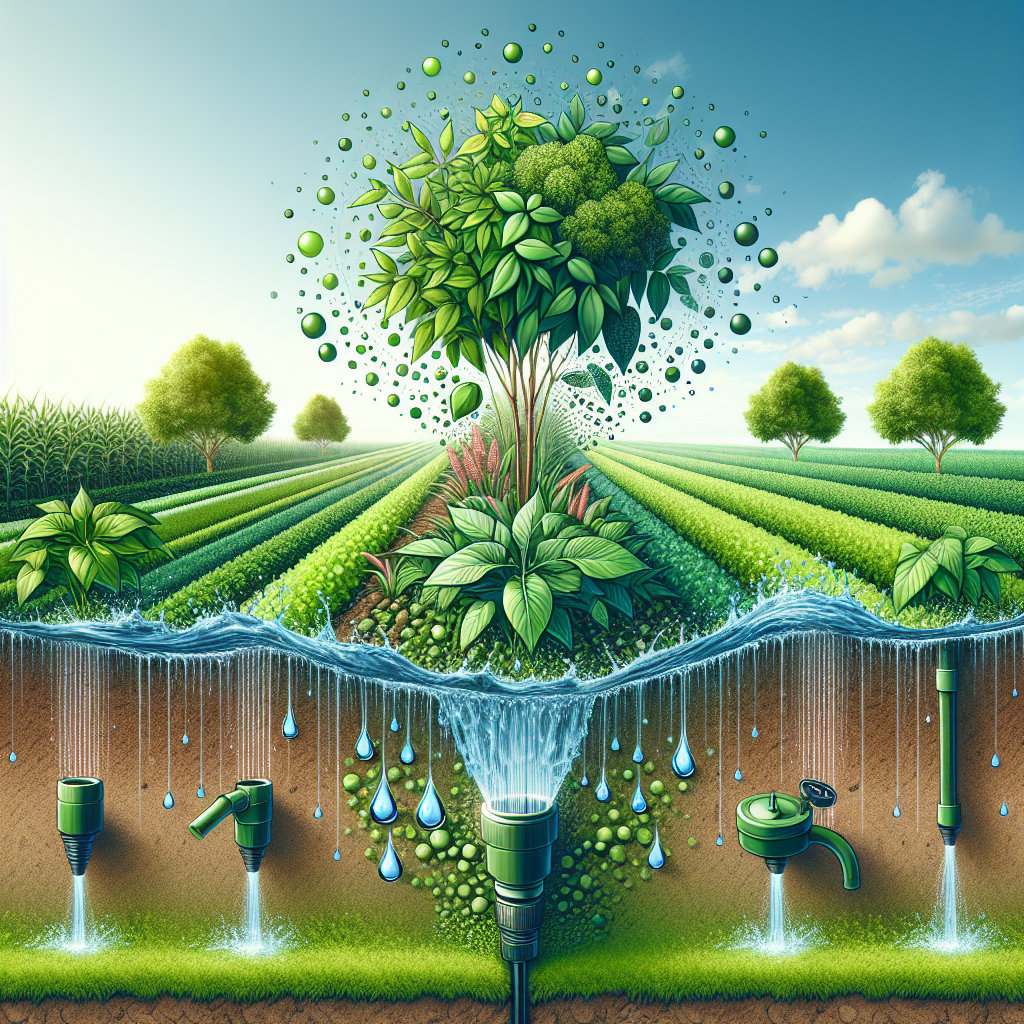In recent years, the importance of sustainable agriculture and responsible water management practices has come to the forefront of agricultural discussions. With the growing global population and increasing pressure on water resources, farmers and growers are exploring more efficient and eco-friendly irrigation methods to ensure food security while also minimizing their environmental impact. One such method that has gained popularity is the slow drip irrigation system.
Drip irrigation is a type of micro-irrigation system where water is delivered directly to the roots of plants through a network of tubes, pipes, valves, and emitters. Unlike traditional irrigation methods such as flood or furrow irrigation, which can lead to water wastage through evaporation, runoff, and oversaturation of soil, drip irrigation ensures that water is applied precisely where it is needed most. This targeted approach not only improves water use efficiency but also has several environmental benefits.
One of the key environmental benefits of using a slow drip irrigation system is water conservation. Traditional irrigation methods often result in significant water loss due to evaporation and runoff. In contrast, drip irrigation delivers water directly to the root zone of plants, reducing evaporation losses and ensuring that every drop counts. Studies have shown that drip irrigation can be up to 90% more efficient than conventional surface irrigation methods, leading to substantial water savings over time.
By conserving water through drip irrigation, farmers can help alleviate pressure on dwindling freshwater resources and reduce their reliance on unsustainable groundwater pumping. In many regions around the world, agriculture is a major contributor to groundwater depletion, leading to land subsidence, saltwater intrusion, and other environmental consequences. Implementing drip irrigation systems can help farmers reduce their groundwater usage and promote sustainable water management practices.
Another environmental benefit of using a slow drip irrigation system is reduced soil erosion and nutrient leaching. Traditional surface irrigation methods can cause soil erosion by washing away topsoil and nutrients from fields. This not only reduces soil fertility but also contributes to sedimentation in rivers and lakes, affecting aquatic ecosystems. Drip irrigation minimizes soil erosion by delivering water slowly and evenly to plants’ roots, reducing runoff and preserving soil structure.
Additionally, slow drip irrigation helps improve nutrient uptake by plants by delivering fertilizers directly to the root zone along with water. This targeted application reduces nutrient leaching into groundwater or surface water bodies, minimizing pollution risks and protecting local ecosystems from harmful chemical inputs. By promoting efficient nutrient management practices through drip irrigation systems, farmers can enhance crop productivity while minimizing their environmental footprint.
Furthermore, drip irrigation systems are versatile and adaptable to various crop types and growing conditions. Whether used in traditional row crops like corn or soybeans or specialty crops like fruits and vegetables, slow drip systems can be customized to meet specific watering needs based on plant type, growth stage, soil type, climate conditions,and other factors. This flexibility allows farmers to optimize their crop production while conserving resources effectively.
In addition to these direct environmental benefits,dripirriagationcanalsobeusedtosupportsustainableagriculturepractices,suchasorganicfarmingandprecisionagriculture.Given the rising consumer demand for organic produceandtheimportanceofreducingchemicalinputsinagriculture,dripirrigationsystems provide an ideal platform for implementing organic farming methods.Organicfarmerscanuseorganicfertilizersandsupplementsdeliveredthroughdripirrigationto promotehealthysoilandplantgrowthwithoutcompromisingenvironmentalintegrity.Precision agriculturetechniques,suchassite-specificmanagementandvariable-rateirrigation,coupledwithdrip irrigationsystems,candeliveroptimalwater,nutrient,andchemicalapplicationsbasedonreal-timecrop requirements.This targetedapproachenhancesresourceefficiency,minimizewaste,andimprovecropyieldswhileminimizingenvironmentalimpact.
Irrigation playsacriticalroleinensuringfoodsecurityandsustainableagriculturaldevelopment.However,theincreasingpressuresonwaterresourcesandthegrowingawarenessofenvironmentalconcernshaverevealedtheneedforinnovativeandsustainableirrigationsolutions.Slowdripirrigationsystemshaveemergedasanattractiveoptionforfarmersandgrowersseekingtoimprovewateruseefficiency,minimizeenvironmentalimpact,andpromotesustainableagriculture.Withtheirabilitytopreciselydeliverwaterandnutrientstotheplant’sroots,dripirrigationsystemsareapowerfultoolforconservingwater,reducingsoilerosion,opti-mizingnutrientmanagement,andpromotingorganicfarmingandprecisionagriculturespractices.Aswecontinuemovingtowardsasmart,future-readyagriculturesector,dripirrigationsystemswillplayanintegralroleinensuringfoodsecuritywhileprotectingourpreciousnaturalresources.
In conclusion,theadoptionofslowdripirrigationsystemsrepresentsamajorstepforwardinthepursuitofsustainableagricultureandonmentofresponsiblewatermanagementpractices.Byconservingwater,minimizingerosion,reducingnutrientleaching,promotingorganiccultivation,andenhancingprecision farmingtechniques,dripirrigationsystemshavethepotentialtosignificantlybenefitourplanet’secosystems.Withevolvedfarmingpracticesandanincreasedemphasisonsustainability,itishighlyencouragingtoseethemomentumbuildaroundthedesignimplementationofslowdripirrigationsystemsasthepreferredchoiceformodern-day irrigated agriculture.Asweenteraneraoffoodsecuritychallengesandanuncertainclimateregime,drippingswillnotonlyplayaroleinsafeguardingourfuturefoodsupplybutalsocontributeinsafeguardingontemporaryenviron-mentaltreasures.Wemustworktogetheraspolicymakers,farmers,reserachers,andstakeholdersinprioritizingthesedevicestoundertakecollaborativeactionsfortransitioningtowardsaremoresustainablefoodsystemthatcanmeetallofourneedswhilesimul-taneouslypreservingourenvironmentalheritageItistimeactnow!













